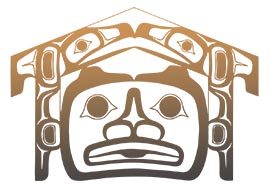 With the summer comes more time for being on the land and participating in fun activities, like hiking, socially distanced picnics, trips to local campgrounds, and new readings! Xwi7xwa has found inspiration from #Skwalawenreads who celebrates local ancestral plant relationships and Squamish culture. We’ve made a few additions but hope this list of books helps you feel a connection to the nature around us!
With the summer comes more time for being on the land and participating in fun activities, like hiking, socially distanced picnics, trips to local campgrounds, and new readings! Xwi7xwa has found inspiration from #Skwalawenreads who celebrates local ancestral plant relationships and Squamish culture. We’ve made a few additions but hope this list of books helps you feel a connection to the nature around us!

The Standing People: Wild Medicinal Plants of British Columbia
by Kahlee Keane explores the medicinal plants in different parts of BC and how they are used through the lens of the herbalist author.

Braiding Sweetgrass by Robin Wall Kimmerer is a Potawatomi woman who considers plants and animals to be our oldest teachers. She believes these teachers help us understand what it means for humans to be “the younger brothers of creation.” Throughout the book, she circles toward a central argument: the awakening of a wider ecological consciousness requires the acknowledgement and celebration of our reciprocal relationship with the world.

As We Have Always Done: Indigenous Freedom through Radical Resistance by Leanne Betasamosake Simpson locates Indigenous political resurgence as a practice rooted in uniquely Indigenous theorizing, writing, organizing, and thinking. Indigenous resistance is a radical rejection of contemporary colonialism focused around refusing the dispossession of Indigenous bodies and land.

Ancient Pathways, Ancestral Knowledge: Ethnobotany and Ecological Wisdom of Indigenous Peoples of Northwestern North America by Nancy J. Turner is two volumes that follows Indigenous People throughout time, showing how they actively participated in their environments, managed and cultivated valued plant resources, and maintained key habitats that supported their dynamic cultures for thousands of years, as well as how knowledge was passed on from generation to generation and from one community to another.

The Water Walker written and illustrated by Joanne Robertson is the story of a determined Ojibwe Grandmother (Nokomis) Josephine Mandamin and her great love for Nibi (Water).

The Sea of Grass: a Family Tale from the American Heartland by Walter R. Echo-Hawk is a historical fiction novel inspired by real people and events that were shaped by the land, animals, and plants of the Central Plains and by the long sweep of Indigenous history in the grasslands.

Bridging Cultures: Scientific and Indigenous Ways of Knowing Nature by Glen Aikenhead & Herman Michell addresses the need for environmental science and science educators to embrace traditional Indigenous knowledge in a straight-forward and accessible manner.

Medicines to Help Us: Traditional Métis Plant Use by Christi Belcourt and Michif translations by Rita Flamand & Laura Burnouf helps readers understand and find their own awareness of the healing power of plants that is a life force generated from the strength of Mother Earth. It fuses Belcourt’s evocative artwork with Indigenous Traditional Knowledge and Western Science.

Muskgege: Carol’s Traditional Medicines by Caroline Sanoffsky and illustrated by Nicole Marie Burton is written for grades K-8 students featuring descriptions and illustrations of 36 wild plants that can be used to make medicines.

Plants Have So Much to Give Us, All We Have to Do is Ask by Mary Siisip Geniusz is a book of Anishinaabe teachings, recipes, and botanical information told in the form of stories that brings the plants to life with narratives that explain their uses, meaning, and history.
Looking for more suggestions? Email us at xwi7xwa.library@ubc.ca with some more information on what you’re looking for and we’ll give you suggestions!
